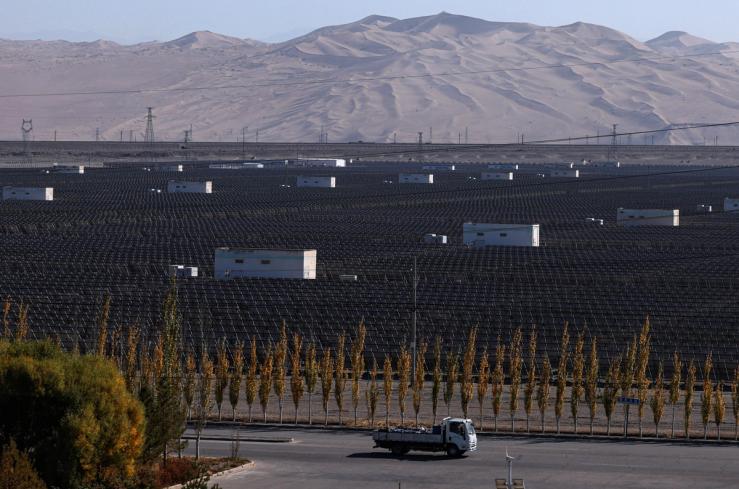Andy’s view
At a glance, China’s export-focused manufacturing sector is buoyant, racing away from the US and other advanced economies in areas including batteries, robotics, and biotechnology. And yet its domestic economy is in deep crisis, suffering from spiraling levels of joblessness, plunging consumer confidence, and falling business investment in the midst of a real estate collapse.
These tensions are mirrored in sectors such as automotives — the EV industry, for example, is both thriving and in the doldrums — and renewables: Depending on the view one takes, China is either the savior of the planet, producing the green hardware the world needs, or its greatest despoiler, for being by far the world’s largest emitter of greenhouse gases.
To understand China is to believe all these things to be true. It is an economy moving fast and slow at the same time, a tech superpower that creates opportunities for PhD scientists but not its underclass of rural workers, a nation that manufactures a third of everything made in the world but can’t stir demand at home. Its growth model is so lopsided it is unbalancing the global economy. In short, China is at war with itself; taking the long view, the current US-China trade spat is a sideshow.
EVs are a case in point. BYD out-innovates and outsells Tesla; its latest batteries provide a 250-mile range on a five-minute charge. Yet the EV sector as a whole is plagued by massive overinvestment that is adding to the country’s mountain of debt and weighing on growth: More than 100 EV makers crowd the market, crushing profits — a common phenomenon in China known as “involution.”
There are other anomalies. China, the undisputed global leader in renewable energy, installed more solar panels in the first half of this year than all existing US capacity, and it is readying to build the world’s biggest-ever wind turbine. Yet it’s still surging its fossil fuel output to meet the demands of its red-hot manufacturing sector; new and revived coal power proposals hit a decade high in the first half of this year, according to the Centre for Research on Energy and Clean Air.
China is doubling down on its tech ambitions. A high-level Communist Party conclave in Beijing this week vowed to “greatly increase” the country’s capacity in science and technology; a communiqué issued at the end of the meeting also spoke of the need to boost domestic consumption, but without going into any detail.
In one sense, China’s economic strengths and weaknesses are two sides of the same coin. Scott Kennedy, a China specialist at the CSIS think tank, and Scott Rozelle, a Stanford Center fellow, write in Foreign Policy that “a seemingly bifurcated picture is still one country, and the roots of both the optimism and the pessimism are the same.”
In effect, China has failed to connect its high-tech economy to the real economy, one in which 60% of workers don’t have a high school diploma, and where 900 million people get by on roughly $10 a day.
For now, China is trying to export its way out of its dual economy problem. The Mercator Institute says that net exports accounted for 30% of its GDP growth last year, the highest share since 1997. But the export surge is stoking a trade war with the US and raising tensions with China’s other trading partners.
Scott Bessent, the US Treasury Secretary, believes that China is now in a “recession/depression,” despite official data that show the country is on track to meet its growth target of around 5% this year. That leads him to believe the US has the upper hand in the tit-for-tat trade spat. Beijing is fighting back using its dynamic tech economy, especially its control over global supply chains. Chinese threats to choke off exports of rare earths will likely result in a truce.
The warping effects created by a dual economy have profound consequences for China’s long-term prospects. In the Financial Times, Tej Parikh explains how colossal financial waste helps account for the fact that the Chinese innovation and manufacturing boom has failed to translate into notable productivity gains.
And paradoxically, China’s technological surge, designed to catapult the country into the top tier of developed nations, has coincided with a slowdown in GDP and risks driving the country into the middle-income trap instead.
China’s leader Xi Jinping is a Marxist, comfortable with contradictions; in his ideological worldview, history progresses through conflict between opposing forces. But today, the clash that matters most is not the one playing out between the US and China, but within China itself.
Notable
- China’s industrial policy that favors overcapacity generates both domestic problems and global trade friction, George Magnus of Oxford University’s China Centre writes: “To improve economic performance ... China needs to cross a political Rubicon.”
- China’s push to dominate clean-tech manufacturing is paradoxically slowing its climate progress, because the sector’s advancement depends on cheaper coal power, Le Monde reports.


